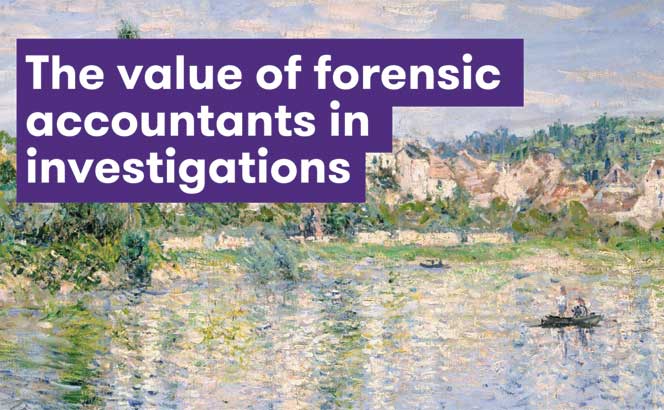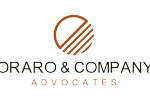Kevin Shergold draws inspiration from the art world to explain the role of forensic accountants
In the art world, spotting the difference between an authentic masterpiece and an impeccably forged fake can often hinge on the minutest of details
Renowned forensic art analyst, John Martin, has saved (and ruined) many art owners dreams by confirming or denying the authenticity of highly valued artworks. A 1965 Rothko he examined was deemed a fake due to a layer of white paint between the canvas and the oils. During the period in question, Rothko had used a transparent layer.
Uncovering a complex financial crime is not dissimilar; it too requires a sophisticated lens. Imagine the books and records of a company as a painting – a work of art created by all of the decisions and interactions with stakeholders, resulting in transactions, and associated records kept by
a business.
This accounting system creates a dilemma for fraudsters. Double-entry book keeping ensures that if value leaves a business, it must be recorded; so if attempts are made to conceal illicit activities, traces inevitably remain. Internal investigations into financial misconduct require expertise that can look at the ‘painting’ and spot the inconsistencies.
Conducting an investigation
When companies surface financial misconduct, those responsible for the internal investigation may feel as if they are flying a kite in a hurricane. Changing enforcement priorities around the world, the development of new corporate criminal liability, conflict between the positions of individuals and their employers, and new data security consequences can make it all seem quite daunting. Yet when all the competing issues are worked through, one central requirement will always remain: how to work out what has happened, quickly and assuredly.
When a red flag is raised and a company considers it may have suffered or committed a financial crime, a lawyer is essential. Lawyers coordinate strategy, pay attention to legal and regulatory consequences, and raise awareness of pitfalls, while creating defensive strategies and protecting information.
But the legal team should also be complemented with a more numerically savvy expert. A financial crime requires a transaction and that requires accounting. Even if the crime is concealed – as most are – an oddity in the journal postings, a circumvention of controls or an inconsistency in the documentation or business purpose will exist in some form. While it may seem obvious that an external forensic accountant is the right expert to look into this, it may be tempting to rely on the company’s own finance function, but that is rarely the solution.
Forensic accountants possess the lens that allows you to look deeper into the “painting” and can play a critical role in the focus and execution of investigations.
Forensic accountants possess the lens that allows you to look deeper into the ‘painting’ and can play a critical role in the focus and execution of investigations. This can be can be critical in a variety of matters in addition to false accounting, such as: asset misappropriation, bribery and corruption, money laundering, competition infringements, employee misconduct issues, regulatory breaches, market abuse, cybercrimes, commercial disputes and even acute investment or value decline.
Mining data in the right way
These days, investigations are often assisted or even driven by technology for the discovery of key evidence. Large data sets need to be examined quickly and comprehensively, within defensible reason, to extract evidential material and understand what has happened. The success of investigations is enhanced when the digital forensic solution is integrated with the knowledge and ability of a forensic accountant to select and review this data – whether transactional or unstructured such as emails.
Forensic accountants can ensure the client is aware of what information has been included for review and advise on further information sources that should be interrogated, why they should be interrogated and how this should be done, which can help later on to avoid the perception by a regulator that the client has turned a blind eye to the activity.

The value of a forensic accountant led financial investigation is to ensure that businesses have:
- A critical understanding of the accounting and control environment that surround transactions;
- an ability to appraise the commercial imperatives for different actors in the purchase and sales cycles;
- an understanding of where the repositories for evidence will be found and how to mine them;
- a well-practised forensic discipline of ensuring findings are objective and re-performable, applying the most advanced technology;
- an ability to build the factual narrative amidst the inevitable gaps in information.

Kevin Shergold











